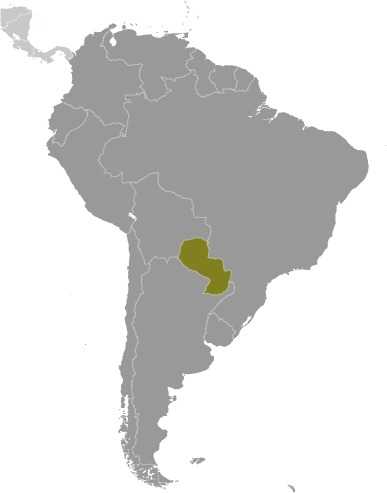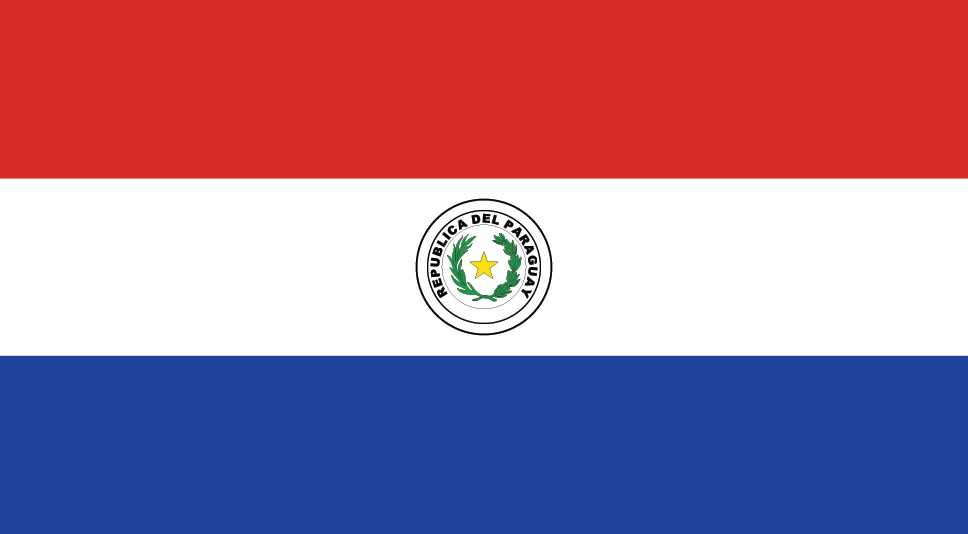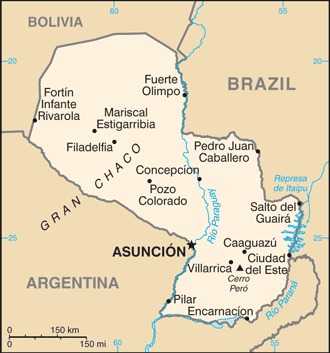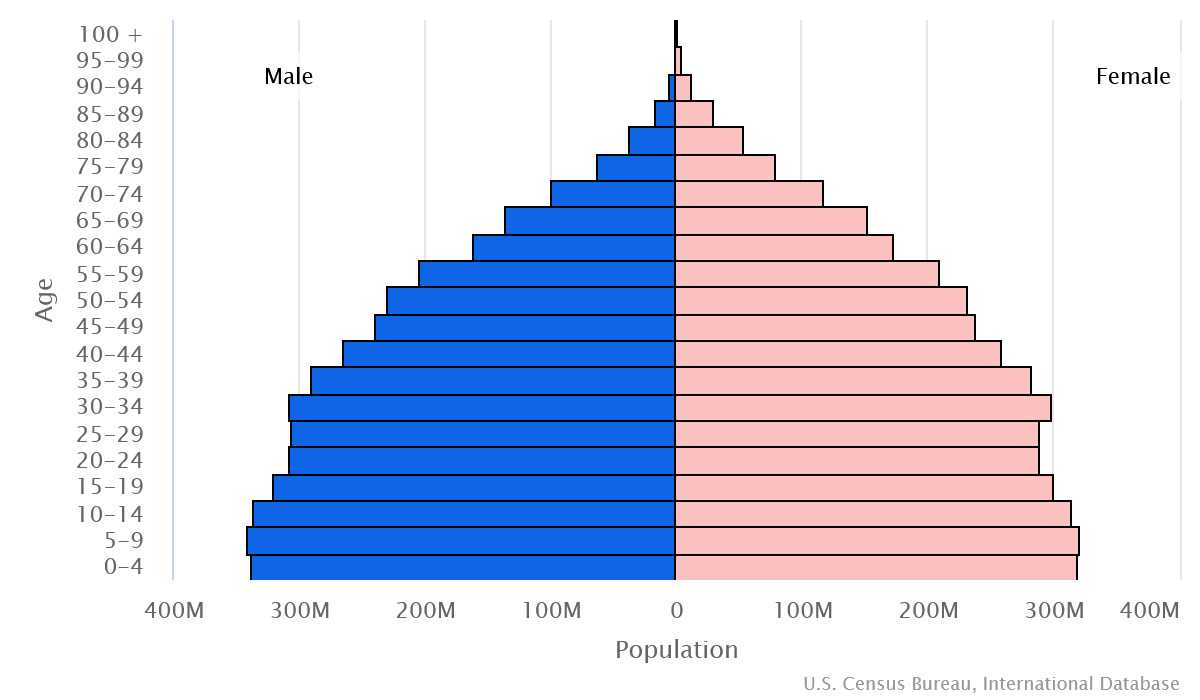Introduction
Background
Paraguay achieved its independence from Spain in 1811. The 35-year military dictatorship of Alfredo STROESSNER ended in 1989, and Paraguay has held relatively free and regular presidential elections since the country's return to democracy.
Geography
Area
total : 406,752 sq km
land: 397,302 sq km
water: 9,450 sq km
Climate
subtropical to temperate; substantial rainfall in the eastern portions, becoming semiarid in the far west
Natural resources
hydropower, timber, iron ore, manganese, limestone
People and Society
Population
total: 7,522,549
Ethnic groups
Mestizo (mixed Spanish and Indigenous ancestry) 95%, other 5%
Languages
Spanish (official) and Guarani (official) 46.3%, only Guarani 34%, only Spanish 15.2%, other (includes Portuguese, German, other Indigenous languages) 4.1%, no response 0.4%; note - data represent predominant household language (2012 est.)
Religions
Roman Catholic 80.4%, Protestant 7% (Evangelical (non-specific) 6.7%, Evangelical Pentecostal <0.1%, Adventist <0.1%, Protestant (non-specific) <0.1%), Believer (not belonging to the church) 5.7%, other 0.6%, agnostic <0.1%, none 0.2%, unspecified 6.2% (2023 est.)
Population growth rate
1.09% (2024 est.)
Government
Government type
presidential republic
Capital
name: Asunción
Executive branch
chief of state: President Santiago PEÑA Palacios (since 15 August 2023)
head of government: President Santiago PEÑA Palacios (since 15 August 2023)
Legislative branch
description: bicameral National Congress or Congreso Nacional consists of:
Chamber of Senators or Camara de Senadores (45 seats; members directly elected in a single nationwide constituency by closed-list proportional representation vote to serve 5-year terms)
Chamber of Deputies or Camara de Diputados (80 seats; members directly elected in 18 multi-seat constituencies - corresponding to the country's 17 departments and capital city - by closed-list proportional representation vote to serve 5-year terms)
Economy
Economic overview
upper middle-income South American economy; COVID-19 hit while still recovering from 2019 Argentina-driven recession; global hydroelectricity leader; major corruption and money-laundering locale; highly agrarian economy; significant income inequality
Real GDP (purchasing power parity)
$108.022 billion (2023 est.)
$103.159 billion (2022 est.)
$102.978 billion (2021 est.)
Real GDP per capita
$15,700 (2023 est.)
$15,200 (2022 est.)
$15,400 (2021 est.)
Agricultural products
sugarcane, maize, soybeans, cassava, rice, wheat, milk, beef, oranges, oil palm fruit (2022)
Industries
sugar processing, cement, textiles, beverages, wood products, steel, base metals, electric power
Exports
$18.711 billion (2023 est.)
$14.971 billion (2022 est.)
$14.821 billion (2021 est.)
Exports - partners
Brazil 36%, Argentina 19%, Chile 12%, Russia 4%, US 3% (2022)
Exports - commodities
beef, electricity, soybeans, corn, soybean meal (2022)
Imports
$17.906 billion (2023 est.)
$17.142 billion (2022 est.)
$14.316 billion (2021 est.)
Imports - partners
China 28%, Brazil 23%, US 11%, Argentina 8%, Chile 3% (2022)
Imports - commodities
refined petroleum, broadcasting equipment, cars, fertilizers, pesticides (2022)
Exchange rates
guarani (PYG) per US dollar -
Page last updated: Wednesday, July 24, 2024




